Lichen is accompanied by a characteristic rash, a violation of pigmentation, peeling, itching, hair loss and other similar symptoms.
If dermatologists are primarily interested in the etiology and symptoms of the disease, then it is more important for those around the patient to know – is it contagious? Is it transmitted from the patient to others, are any precautions necessary?
In order not to infect anyone around, the sick person should switch to the home mode (in some cases he is placed in a hospital) and use individual dishes, household items and hygiene products until they recover completely.
Transmitted, depending on its varieties.
- Pink versicolor (lichen lichen) – yes
- Tinea versicolor (herpes zoster) -yes
- Ringworm (trichophytosis, microsporia) -yes
- Pityriasis (multicolored) lichen – no
- Lichen planus – no
- Soaking lichen (eczema) -no
- Scaly lichen (psoriasis) -no
Fungi most often become its causative agent:
- zooanthropophilic (affect humans and animals);
- anthropophilic (found only in humans);
- geophilic (transmitted through contact with the ground).
And some varieties of lichen are viral in nature, and weakened immunity becomes the key impetus for their development in all cases.
What lichen is contagious?
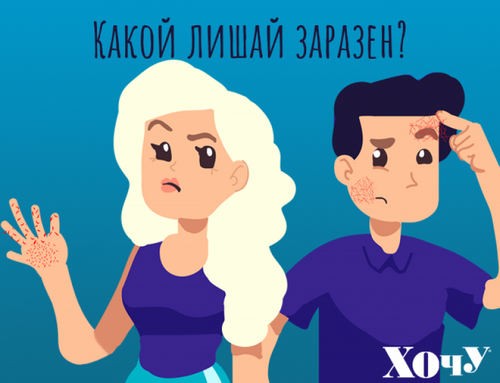
The main types of lichen and how to treat them
The first and most obvious symptom of lichen is the appearance of suspicious spots or rashes on the skin. In this case, you should immediately contact a dermatologist who will diagnose, make an accurate diagnosis and prescribe treatment.
Pink versicolor (lichen gibber)
It manifests itself in the form of inflammation of the skin, on which pink or light brown rounded spots appear, the center of which is usually slightly paler than the edges and can peel off. The size of the spots varies from a few millimeters to 3-4 cm.

Most often affects people from 10 to 55 years of age during the period of seasonal weakening of immunity (in spring and autumn), especially after a cold infection. It can arise both from “nowhere” and after contact with the carrier. As a rule, spots are localized on the back, sides, abdomen and chest. At the initial stage of the disease, the first “maternal” plaque appears, over time it increases to 3-4 cm, and a smaller pink rash appears nearby, which can cause a slight itch.
Pink lichen does not require any special treatment and passes on its own after a half to two months. Antihistamines can be prescribed by a doctor to relieve itching, and vitamin complexes and immunomodulators can be used to strengthen immunity. You will also need to temporarily stop visiting the pool, sauna, solarium, reduce the number of water treatments at home, limit the use of cosmetics.
Herpes zoster (herpes zoster)
Caused by chickenpox virus. It is localized mainly in the region of the ribs, but can sometimes be present on other parts of the body. This disease is mainly affected by adults, in childhood it manifests itself as chickenpox.
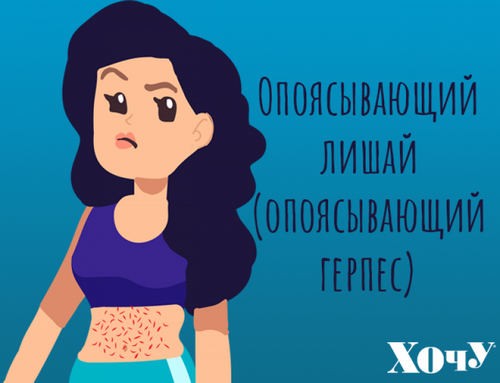
Tinea is characterized by severe itching, the appearance of vesicles with a clear liquid that burst after 3-4 days and become crusty.
A characteristic of the disease is severe pain (since the herpes virus affects the nervous system). They can occur in the intercostal space and in other parts of the body where the nerve bundles pass. Those who are not infected with chickenpox, as well as those whose body, despite a previous illness, did not form a sufficiently strong immunity, can get infected.
In the absence of adequate treatment, this type of lichen can cause secondary diseases leading to lesions of the cornea of the eyes, hearing impairment, unilateral paralysis of the facial muscles of the face, muscle weakness, etc.
Usually, after 2-4 weeks, herpes zoster gradually disappears, but itching and pain can remain for a long period – until the affected nerve cells are completely restored. Treatment consists of taking antiviral drugs – Acyclovir and painkillers (if necessary).
Ringworm (trichophytosis)
It is caused by trichophytone fungi, they can be “picked up” both from animals and from another person – in direct contact with the patient, as well as through hats, towels, clothes, etc. In this case, the disease obtained from the animal proceeds in a more severe form.
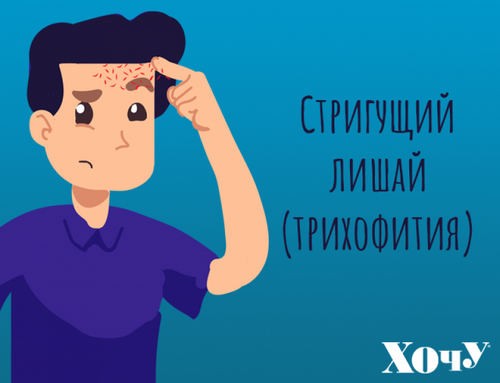
This type of lichen manifests itself in the form of small spots with uneven outlines on the scalp (or in the area of the beard and mustache in an adult man), less often in other parts of the body. The spots are pink, but closer to the center they are covered with whitish scales. Hair in the affected area is thinning and breaking close to the root, slight itching is possible.
This lichen is treated with antifungal drugs and local treatment (iodine, sulfur-salicylic, sulfur-tar ointment). Since the disease is contagious, in order to prevent the spread of the fungus, isolation of the patient is necessary during treatment, and with advanced forms of the disease, even hospitalization is possible.
Lichen planus
Suspected of being caused by a virus against a background of decreased immunity due to severe stress or allergies, is not contagious. It manifests itself in the form of the formation of multiple flat red, purple nodules on the skin, nails and mucous membranes, accompanied by severe itching. Most often, this disease affects middle-aged and elderly women.
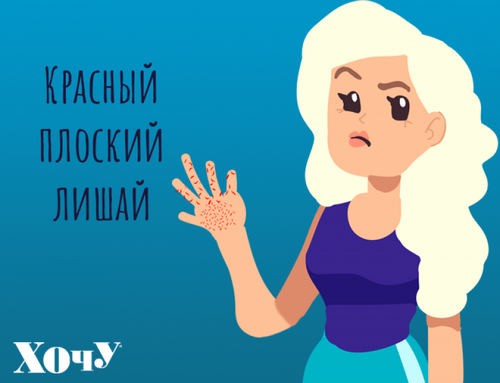
Lichen planus can occur in several forms:
- ring-shaped – rashes resemble rings;
- warty – looks like tubercles of irregular shape;
- erythematous – soft, itchy tubercles;
- erosive-ulcerative – rashes are accompanied by the appearance of ulcers and erosion.
Treatment consists of taking antihistamines, corticosteroid ointments. To prevent the attachment of other infections, vitamin therapy, physiotherapy, and the use of immunomodulators are used.
Soaking lichen (eczema)
The cause of this disease are considered immune pathologies in combination with a genetic predisposition and other internal factors. Depending on the specific etiology, there are more than 10 varieties of eczema, each with its own specific symptoms, but none of them is transmitted from the patient through household contacts or by any other means.
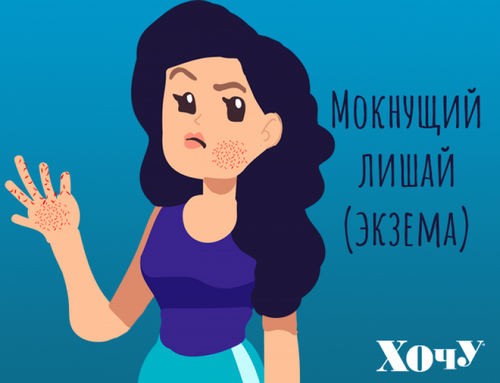
In the “classic” form, weeping lichen is a red spot that is most often localized on the hands or face. Small bubbles appear on their surface, which burst almost immediately, releasing serous fluid (hence the name “weeping”). Drying, the affected areas are covered with a crust. This cycle can be repeated many times and is usually accompanied by palpable itching.
Eczema treatment is long and complex. As a basis, strong hormonal ointments are used in combination with antihistamines. In addition, the dermatologist adjusts the diet and schedule of the patient, prescribes procedures to strengthen immunity and other measures to prevent relapse.
Scaly lichen (psoriasis)
Like eczema, it is considered an autoimmune disease with a strong factor of genetic predisposition, while its etiology has not yet been adequately studied. In the medical literature you can find several classifications of psoriasis, the authors of which distinguish from 6 to 11 of its varieties.
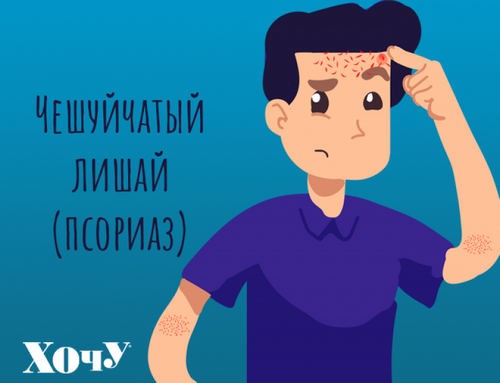
The most typical manifestation of the disease is red papules (nodules protruding above the skin), which merge into characteristic dense “plaques” covered with white scales. These rashes do not have any priority localization; they can appear on almost any part of the body. Additionally, patients often experience itchy and even painful sensations, and also note increased fatigue.
Scaly lichen is not contagious and does not require isolation of the patient, but is currently considered incurable. There are many drugs that can smooth out its external manifestations and increase periods of remission, primarily ointments for external use, as well as comprehensive programs aimed at cleansing, general healing and strengthening of the body, and even psychotherapeutic sessions.



